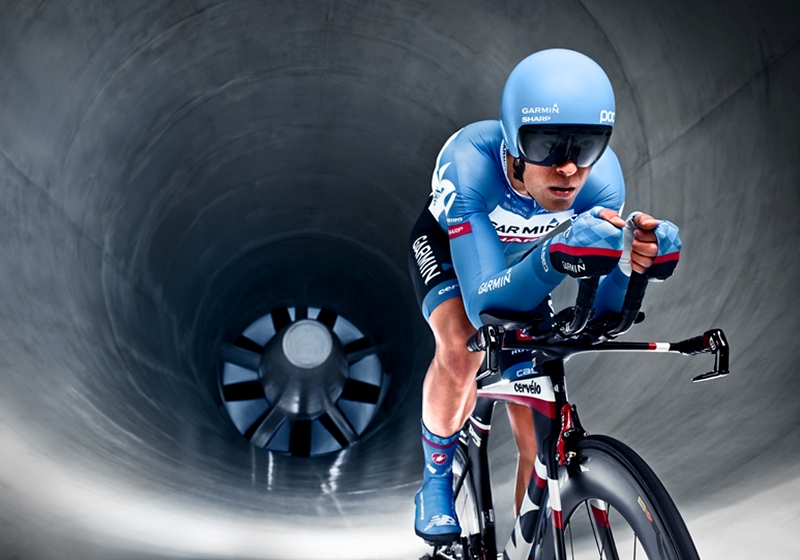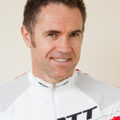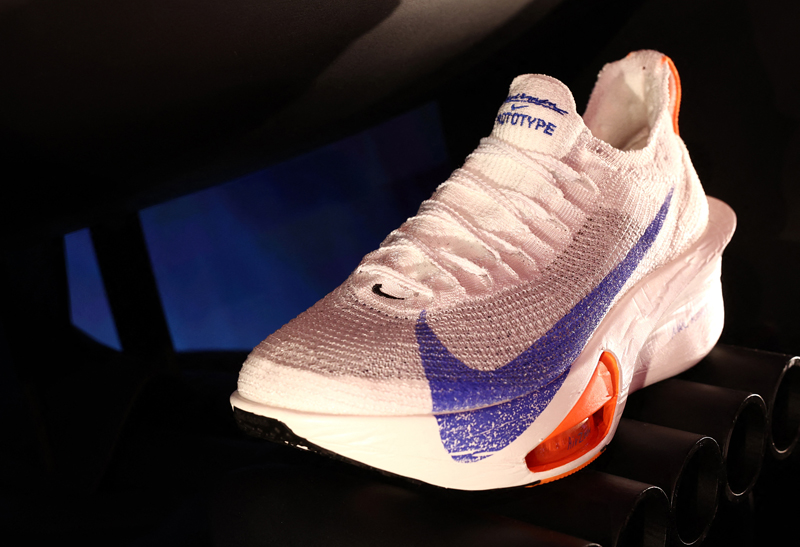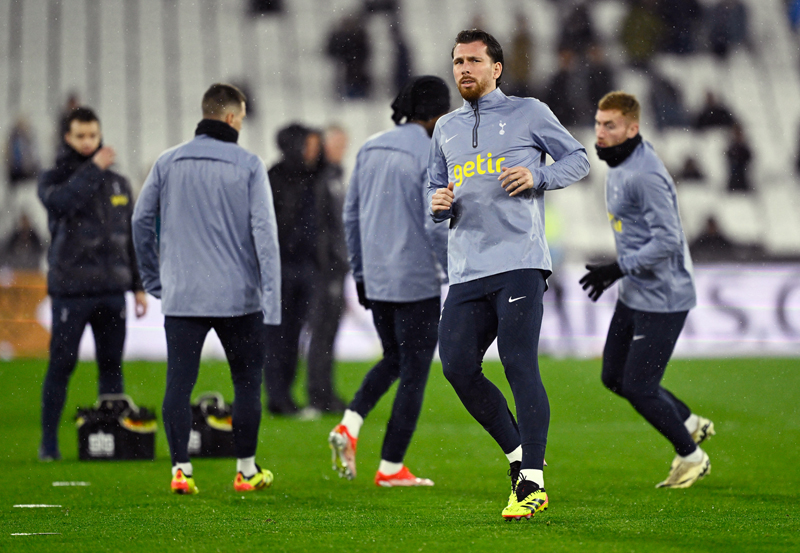You are viewing 1 of your 1 free articles. For unlimited access take a risk-free trial
Hierarchy of performance: know your place!

Multi sports coach and author Joe Beer explains why most athletes need to focus on the basics and not get too far ahead of themselves...
From an Olympian’s pursuit of medal-winning excellence, all the way down to the basics of fitness for the keen amateur, sport has a hierarchy – a ‘pyramid of needs’. At lower levels in this hierarchy are nutrition and training fundamentals, such as consuming enough carbohydrate and developing a base level of fitness.
But as an athlete moves up through the ranks, they tend to spend more, prepare more and look for gains that are becoming harder to find. Every sporting method, technology and new concept lands somewhere on this pyramid. However, what may be an essential tool for elite athletes could be nothing more than an exotic toy for an amateur.
In an Olympic year and with another British Tour de France win, it’s common to hear the latest marketing blurb about a new marginal gain – a new high-tech gadget, training philosophy or lifestyle accessory that can create champions. However, while some of these can complement good genes and hard work, they can never replace them - something the marketing people writing the copy should remember!
As a coach searching for gains for my coaching clients, I read a lot on this topic. In recent years, I can recall quite a few new ideas and technologies that have been touted to improve performance. These include:
- Mattresses shipped around the world, claiming to offer athletes perfect sleep.
- Zones of team buses and training buildings equipped with special lighting to help invigorate or relax athletes.
- Bicycle safety helmets with cooling technologies and materials to keep athletes’ head temperatures lower.
- Special 3D laser analysis to ensure clothing fits ‘millimetre perfect’.
- Health supplements tested in military scenarios being promoted to athletes to help improve heat tolerance.
- Elite mountain bike frame technology to reduce weight - even looking at how much frame paint can be minimised.
Figure 1: Graphic representation of the ‘Hierarchy pyramid’

Positioning
With all the technology, cost and lifestyle complications required to obtain marginal gains, there are some sobering questions to ask about exactly where an athlete positions themselves on this pyramid – a pyramid that we must remember that continues to expand ever upwards.“Though it’s hard to ‘sell’ the basics, perhaps the best starting point for you to become a fitter, faster athlete is not something you see in a shop – but to focus on those basics”
Fifty years ago, even elite athletes were very amateur by today’s standards. For example, while Roger Bannister (who ran the first sub 4-minute mile), did use pace makers, very low weight shoes (for the time), and a coach, today’s elite runners now routinely employ shoe, track, clothing, nutrition, coaching, medical support, financial rewards and everything including the kitchen sink to be the best. But while the elite lifestyle, monetary support and great tools are intoxicating for the keen amateur, there are three pertinent questions to be asked:
- Where in the pyramid am I? - To create the right motivation, your equipment, commitment and goals must all be in harmony. Buying all the best and most expensive widgets can in fact put you under pressure to ‘justify’ the equipment. As has often been heard in the past, “All the clobber, what a knobber” is an unfortunate turn of phrase, but it gets the point across! In a nutshell, don't turn up technologically equipped like Chris Froome and produce mediocrity - unless you have very thick skin and an even thicker wallet! TIP: Use purchases to help keep yourself motivated but try to focus on more basic items that you need everyday
- What's the low hanging fruit? - As has been documented in the past, Team Sky got it wrong when moving from the cycling track onto the road. In hindsight, they said too much was spent on the small marginal gains while the basics were overlooked. For example, getting to bed earlier may be far more effective than an even lighter pair of running shoes or a new cycle computer. Though it’s hard to ‘sell’ the basics, perhaps the best starting point for you to become a fitter, faster athlete is not something you see in a shop – but to focus on those basics: sleep, good nutrition, relaxation, planned training, body work, stamina-skill-speed mix of training etc. TIP: Plan the fundamentals thoroughly. Realise that better equipment, knowledge and training ideas do trickle down, but don’t get mesmerised by every marginal gain that's dangled in front of you.
- Am I dismissing the obvious? - So many times the solution to an athlete’s lack of progress or need to change things has been glaringly obvious (well to me anyway). The athlete may be considering other people’s results or technology purchases which will not fix the problem. When things aren’t going well, it's often a good idea to stand back and ask a friend or coach to look at what you're doing. You may have hit a ceiling and need to try an entirely different approach – or need to think about what's worked before.
CASE STUDY: Adrian Lane – time trial improver

Unlike some events where position matters, amateur time trialling is all about your finish times. Your personal best can also be a way in, allowing you entry into certain races or championships closed to those not fast enough to make the grade. This is in contrast to many other events where you enter and you’re in; in time trialling you may have your entry sent back if your previous times are too slow!
Adrian came to me in late 2015 with good equipment and time trial PBs. He was using an aerodynamic bike - a Scott Plasma 3 - with aero wheels, aero helmet and a club skinsuit. Though there was a very long list of changes needed, he managed to improve significantly as the data in box 1 shows. The steps up the pyramid Adrian jumped were as follows:
BOX 1 Adrians time trial data
| Pre Intervention | #colspan# | #colspan# |
| Distance | Time | Average Power |
| 5 miles | 11:54 | Unknown |
| 10 miles | 23:14 | 298 watt |
| 25 miles | 1:02:00 | 280 watts |
| 50 miles | 2:12:00 | Unknown |
| Post Intervention | #colspan# | #colspan# |
| 5 miles | 11:23 | 378 watts |
| 10 miles | 22:06 | 360 watts (up 62 watts - 20%) |
| 25 miles | 56:43 | 326 watts (up 46 watts - 16%) |
| 50 miles | Not attempted yet |
Basics
- Building a base during winter, ensuring more zone-1 work and less hard efforts. Less effort meant more gains and at no cost, except that average speed dropped for a short period.
- Using a set of rollers for winter and spring riding maintained good skill levels and allowed training to continue when outdoor riding was less than safe.
- Looking at key sessions and races with a focus on documenting power, heart rate, time and outcome data. Before, (as box 1 shows) there were holes in data.
Marginal
- Use of Nopinz Trip Socks to reduce drag by around 4-6 watts, gaining 8-12 seconds for every 10-mile ridden (assuming same power).
- Optimising tire pressure to bodyweight and road conditions. This is still being refined but has already reaped rewards in speed and rider comfort.
- The use of caffeine to optimise alertness – in conjunction with a precise pre-event warm up. Simple and only costing pennies.
Commitments
- During work periods, sleep may be compromised so training sessions needed to adapt. We created an online plan that is a menu as opposed to a fixed-day session format.
- Weekly discussions kept Adrian on track, keeping the training and racing in sync, and not at odds with, his lifestyle and commitments. How often do people do this wrong?
CHANGING TIMES: THE TRICKLE-DOWN EFFECT
In recent years, cycling technology has provided a good example of the trickle-down effect. New technology that begins as a very expensive way of obtaining marginal gains for the top pro riders soon becomes cheaper and makes it way ‘down’ the pyramid, eventually becoming accessible to amateur and recreational riders.A good example is with bike technology. Once made exclusively for professionals, bikes and bike components must now be made available for commercial purchase (ending the previous era of one off elite-only versions). Some bike technology is sold at an extremely high cost – out of reach for all but super-rich amateurs – but is still technically available. An example of this is the ‘Bradley Wiggins 3D printed titanium hour record bike handlebar’ (see figure 2).
Figure 2: Bradley Wiggins 3D printed handlebars

Another driver in this process has been the anti-doping drive in cycling. In the post-Festina and Lance Armstrong era the pro-peleton is a much cleaner place. Teams are therefore looking for improvements across all areas of equipment. These include better wheel and crank bearings, clothing and nutritional supplements. Legal aids like this can trickle down in a positive manner, improving the options available to average amateurs.
A third factor is the availability of empirical evidence. In days of old, equipment was sold with nothing more than catch phrases such as ‘low rolling resistance’, ‘aerodynamic’ or ‘professional’. These phrases meant little and many of these products bore little resemblance to those the professionals actually used. Now, with validation of actual product performance between manufacturers, and the advent of the Internet disseminate information, athletes are able to do fairly accurate DIY testing to verify manufacturers’ claims. It’s no longer good enough just to have a catchy phrase on the packaging!
Placing yourself on the pyramid
You are the best person to decide where you’re placed ‘on the pyramid’ and hopefully the above has given you some insight to help this process. Below however is an equipment example, focusing on cycling/triathlon time trial clothing.Placing yourself on the pyramid
| Training volume (hours/yr) | Skinsuit type | Cost (£) | |
|---|---|---|---|
| Super elite | 1000 | *custom CFD pro colours *race radio pocket *multiple fabric/distance variations *advanced fabrics not generally available | 700-1000 |
| Semi-professional | 600-800 | *custom race radio pocket | 300-500 |
| High performing amateur | 300-500 | *high-end retail to custom - possible CFD design | 200-400 |
| Endurance enthusiast | 150-250 | *stock retail or club version | 70-150 |
Related Files
Newsletter Sign Up
Testimonials
Dr. Alexandra Fandetti-Robin, Back & Body Chiropractic
Elspeth Cowell MSCh DpodM SRCh HCPC reg
William Hunter, Nuffield Health
Newsletter Sign Up
Coaches Testimonials
Dr. Alexandra Fandetti-Robin, Back & Body Chiropractic
Elspeth Cowell MSCh DpodM SRCh HCPC reg
William Hunter, Nuffield Health
Keep up with latest sports science research and apply it to maximize performance
Today you have the chance to join a group of athletes, and sports coaches/trainers who all have something special in common...
They use the latest research to improve performance for themselves and their clients - both athletes and sports teams - with help from global specialists in the fields of sports science, sports medicine and sports psychology.
They do this by reading Sports Performance Bulletin, an easy-to-digest but serious-minded journal dedicated to high performance sports. SPB offers a wealth of information and insight into the latest research, in an easily-accessible and understood format, along with a wealth of practical recommendations.
*includes 3 coaching manuals
Get Inspired
All the latest techniques and approaches
Sports Performance Bulletin helps dedicated endurance athletes improve their performance. Sense-checking the latest sports science research, and sourcing evidence and case studies to support findings, Sports Performance Bulletin turns proven insights into easily digestible practical advice. Supporting athletes, coaches and professionals who wish to ensure their guidance and programmes are kept right up to date and based on credible science.











